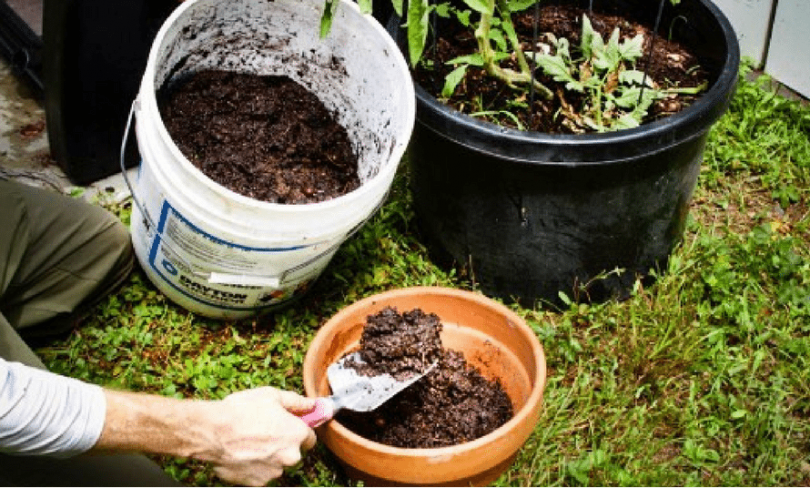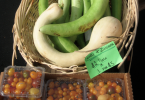Compost is the “aerobically derived remnants of organic materials”, meaning its what you get when you combine the leftovers of plant and animal-based stuff, add a little air, water and nitrogen. The decomposition is performed primarily by aerobes (organisms with oxygen-based metabolism), although larger creatures such as ants, nematodes, and worms (this process is also known as vermiculture) can also contribute. This decomposition occurs naturally except for in extreme anaerobic conditions, like in landfills, very arid deserts or cold weather such as boreal winters or polar regions, which prevent the microbes and other decomposers from thriving. Decomposition happens even in the absence of some of these ingredients, but not as quickly or as pleasantly. Compost is used most often at the consumer level in gardening and agriculture as a fertilizer-type soil additive, and can also often replace commercial fertilizers.
Given enough time, all biodegradable material will compost. The goal in a composting system is to provide a healthy environment and nutrition for the rapid decomposers, the bacteria. Not all biodegradable materials are appropriate for backyard or at-home composting, though. Most backyard systems will not reach temperatures high enough to kill pathogens and deter vermin, so pet droppings, non-vegetarian animal manure, meat scraps, and dairy products are best left in the trash.
- Dry, straw-type material
- Autumn leaves
- Sawdust and wood chips
- Some paper and cardboard
Higher nitrogen ingredients:
- Green plant material
- Manure of herbivorous animals
- Fruit and vegetable trimmings
- Coffee grounds
The most rapid composting occurs with the ideal carbon to nitrogen ratio of between 25 and 30 to 1 by dry chemical weight. In other words, the ingredients placed in the pile should contain 25 to 30 times as much carbon as nitrogen. For example, grass clippings average about 19 to 1 and dry autumn leaves average about 55 to 1, so mixing equal parts by volume nets approximately the correct range.
There are a couple of different common techniques for composting that use two primary methods. Active, or hot, composting, as the name suggests, occurs when the compost stays above about 90°F (32°C), allowing aerobic bacteria to thrive, killing most pathogens and seeds, and rapidly producing usable compost. Passive, or cold, composting occurs in many domestic garden compost bins in which temperatures never reach above 86°F or 30°C. If you put kitchen scraps in the garden compost bin and leaving them untended, you’re cold composting. This “scrap bin,” because it has a very high moisture content and doesn’t get active aeration, is likely to turn anaerobic and will not smell very good, though it will produce compost, after a while. This process can be improved by adding some wood chips or small pieces of bark, leaves, twigs, or a combination of these materials, throughout the mixture, helping to improve drainage and airflow.
Using compost improves soil structure, texture, and aeration and increases the soil’s water-holding capacity. Compost loosens clay soils and helps sandy soils retain water. Adding compost improves soil fertility and stimulates healthy root development in plants. The organic matter provided in compost provides food for microorganisms, which keeps the soil in a healthy, balanced condition. Nitrogen, potassium, and phosphorus will be produced naturally by the feeding of microorganisms, so few, if any, other soil additives will be needed.
Anyone with a few extra square feet (even inside your kitchen or out on a deck or balcony) can produce compost; examples like these are a few options for those who don’t have the space to start a big heap in the backyard. Though a common misconception, properly aerated compost does not smell like rotten food (though the “passive compost” described above certainly can), which makes it possible for apartment and other small home-dwellers to create their own without making a big mess or raising a stink.
More Info
Compost NOW holds regular events around the city to drop off compost.
LSU Ag Center Composting Webpage
How to Make Compost’s Composting Guide
United States EPA’s Composting Site
Treehuggers.com Compost: How to Make It, Bins, Piles and More
(Original Article by Collin Dunn for Treehugger.com; Chart from Wikipedia)
Compost photo by Instagram @thecleanfoodclub.




